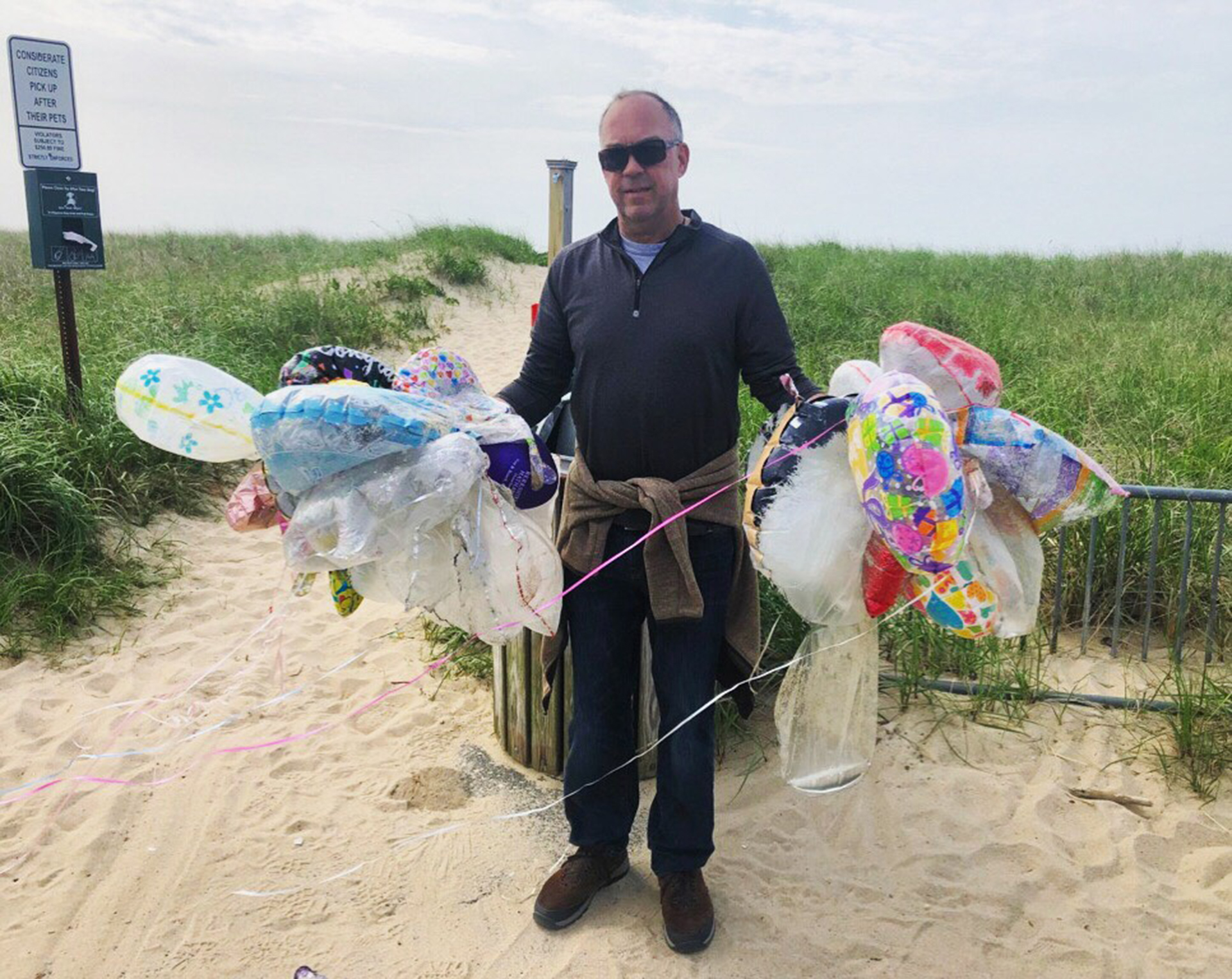Support For Balloon Ban

The Surfrider Foundation has found 1289 balloons at 46 East End beaches in the last two years. That’s an average of 28 balloons per beach. Balloons are mistaken for jellyfish by sea turtles; the ribbons attached to them can cause entanglement and death; Mylar foil can cause power outages and spark fires if it comes in contact with power lines.
To coincide with its bans on plastic bags and plastic straws and polystyrene, the Southampton Town Board is now looking to prohibit the intentional release of balloons. East Hampton Town and Village banned the release of balloons earlier this year.
“If you walk the beaches on Long Island, especially in the spring, you know how big a problem balloons are,” said Colleen Henn, coordinator for Surfrider Foundation’s Eastern Long Island Chapter. “Given how frequently we actually use balloons in comparison to other single-use plastics, it’s shocking the amount that end up on our beaches. Community members need to show up and speak up to end balloon pollution altogether.”
At a June 11 public hearing, Assistant Town Planning Director Janice Scherer said underpinnings for the legislation, brought forward by Councilwoman Julie Lofstad, are Southampton’s Solid Waste Management Plan, and Policy 6 of the Coastal Resources & Water Protection Plan, which looks to protect and restore the quality, diversity, and function of the ecosystem.
“We have a garbage problem. We have a single-use item problem. We have become a ‘throw away’ society,’” said Lofstad, who also brought forth the ban of plastic straws and polystyrene, and whose husband is a commercial fisherman. “Most of the things we use every day will remain on our planet long after we all are gone. We need to change our behaviors and find better alternatives for those things that harm our environment. If we stop and think about where these single-use items go after we are done with them — sometimes only minutes later — perhaps we will be more cognizant and careful in our choices.”
Over the last few years, supplies of helium, a non-renewable resource, have tightened. Experts on www.balloonsblow.org, a nonprofit organization, warn it should be conserved for more important applications.
Lynn Arthur, a North Sea resident who volunteers on the town’s Sustainable Southampton Green Advisory Committee, said the group has debated whether the legislation goes far enough, and wondered how the ban will be enforced. Glorian Berk, co-chair of the committee, said members feels it’s a good first step, but think the town should consider banning balloons altogether. Berk said the sustainability committee is trying to come up with a way to eliminate balloons without hurting local businesses.
Regardless, Arthur called the legislation an “important stake in the ground,” saying she’s speaking for marine animals that can’t speak for themselves, and the harmful effects human activity has had on them.
“The material from balloons ends up in the water, disintegrates, gets eaten by bait fish, and eventually makes its way onto our dinner tables — so there’s also a public health element of this,” Arthur said. “I think this is good legislation. I think we should move forward on it.”
Suggested alternatives to balloons for celebration have been reusable banners, flags, ribbon dancers, pinwheels, or even bubbles. On an even more environmentally-friendly level, there’s the release of butterflies, the planting of trees, and the planting of gardens or building of birdhouses — actions that promote life — or even organizing cleanups in a loved one’s honor.
The board adjourned last week’s hearing to the June 25 meeting, which begins at 6 PM.
“I believe the tide is turning and people are becoming educated about the impact these types of items have on our environment,” Lofstad said. “These may be small steps, but every journey starts with that one first step in the right direction. I am hoping these bans are the start of conversations across our town about what each of us can do, even in a small way, to protect what is so dear to us — the natural resources we love and depend on for the success of our local economy, and the impact on the health of our residents and visitors. I hope we will pause to consider the future Earth that we are leaving to our children and think twice before we go to grab a single-use, throw-away item.”
desiree@indyeastend.com



